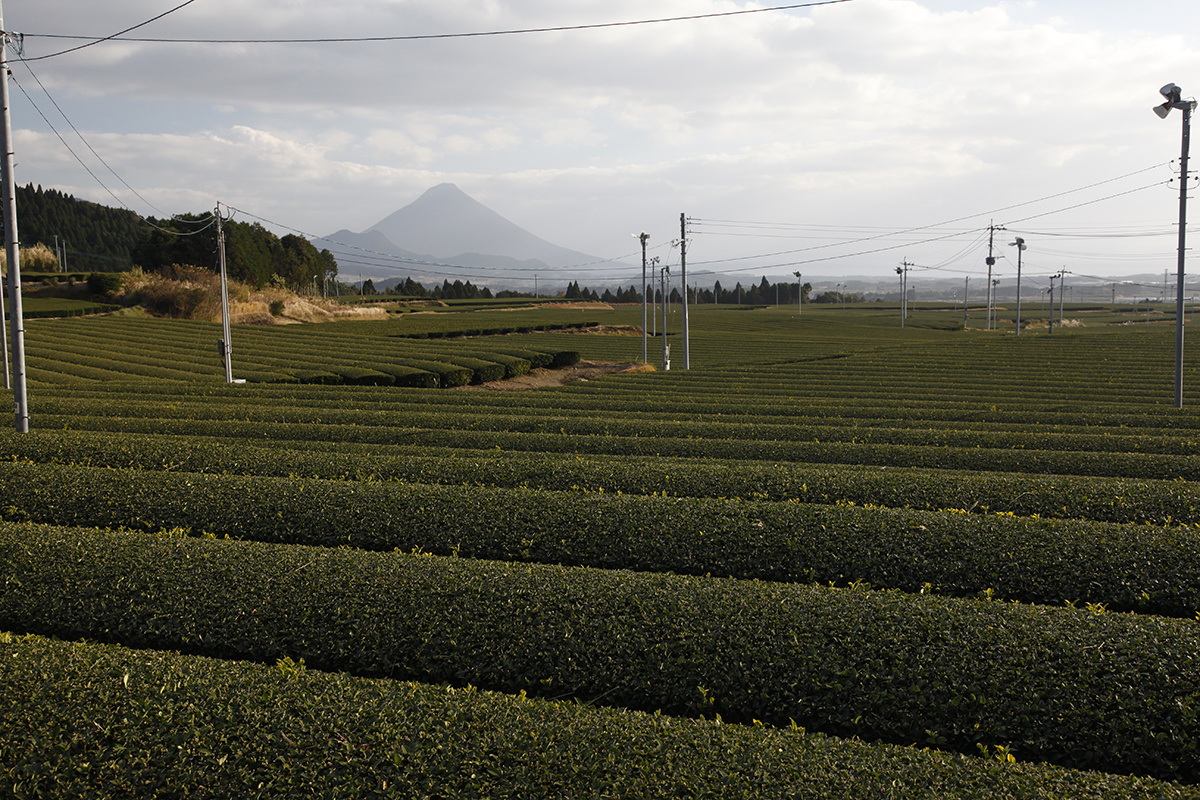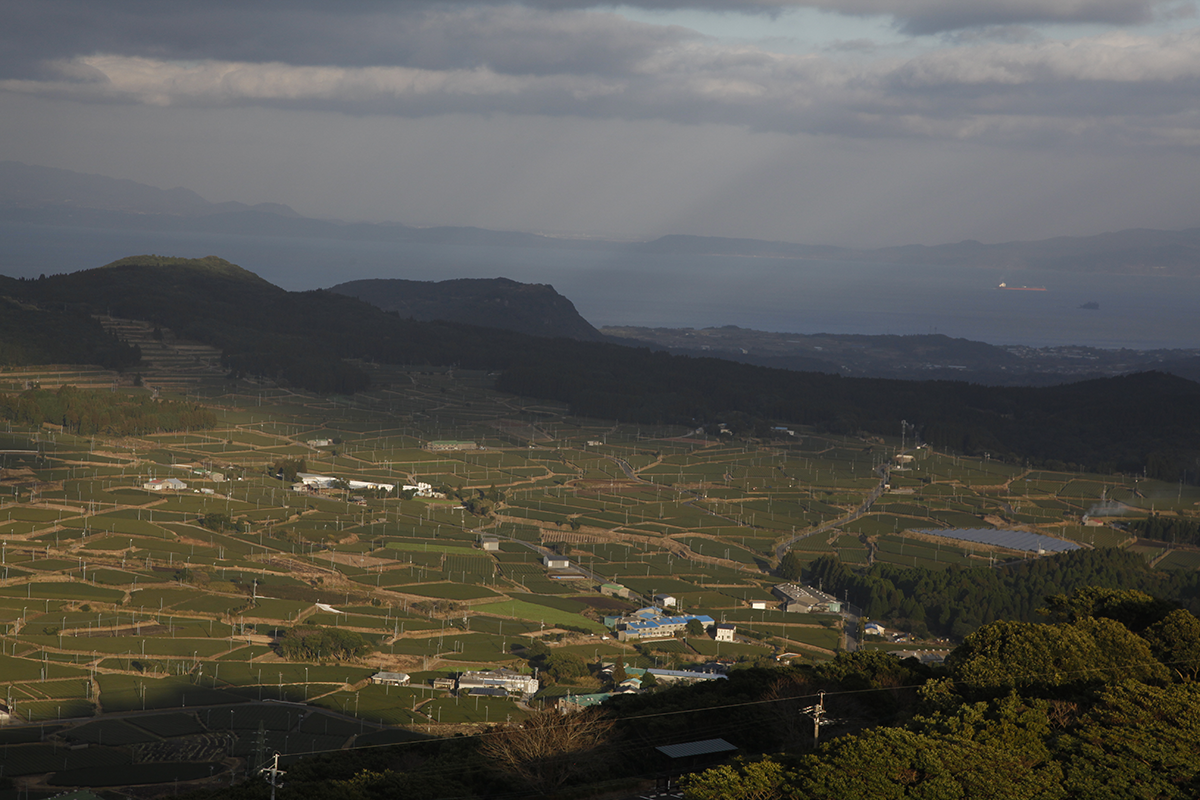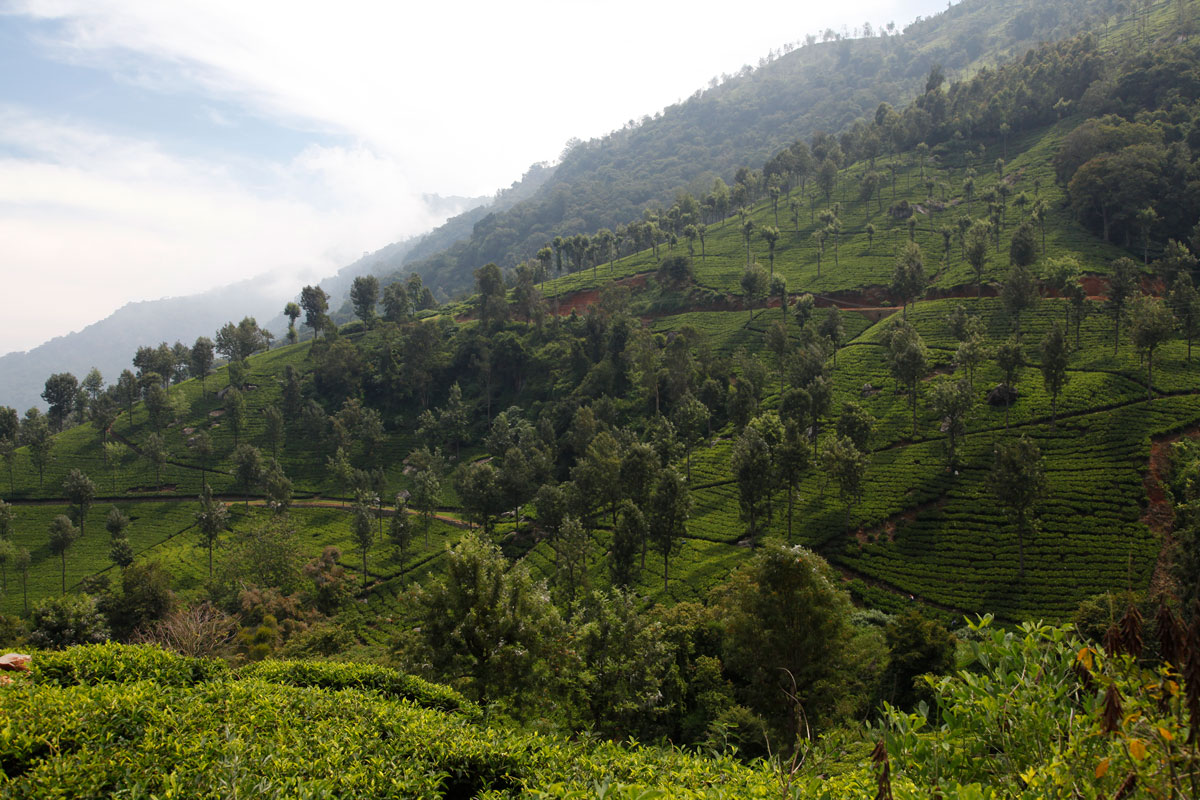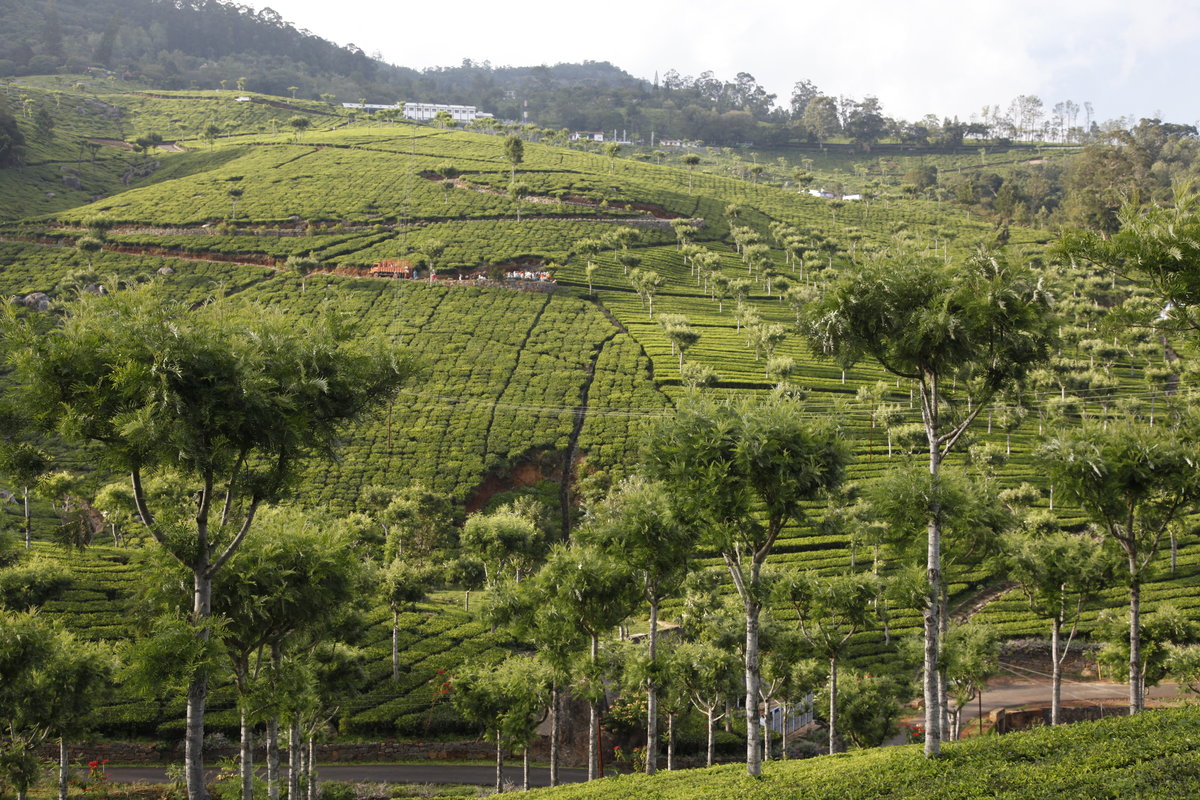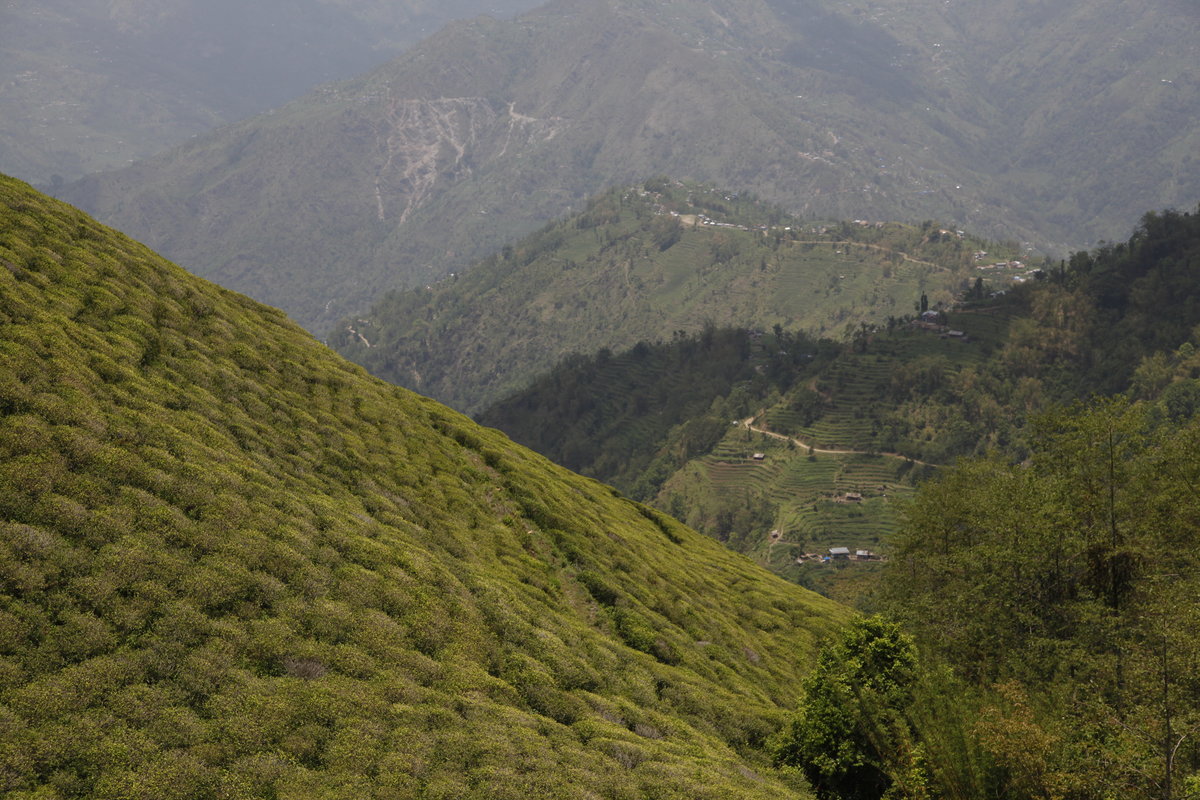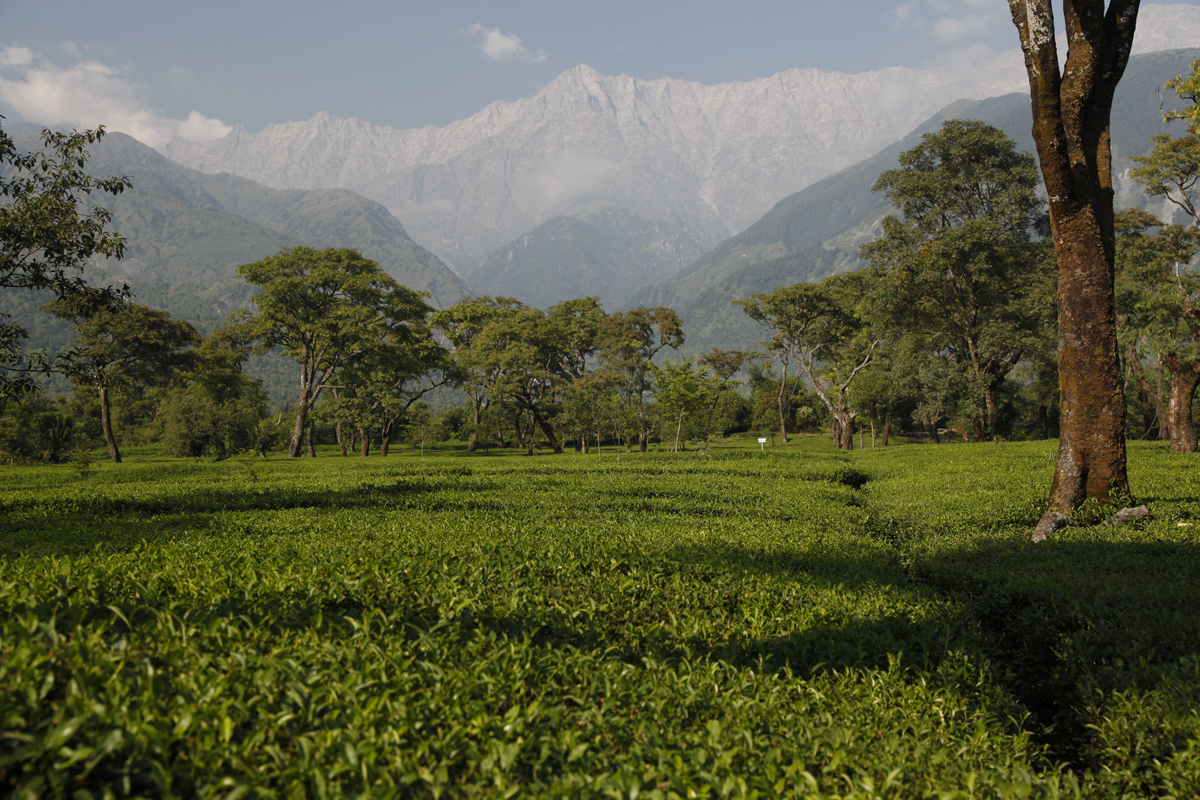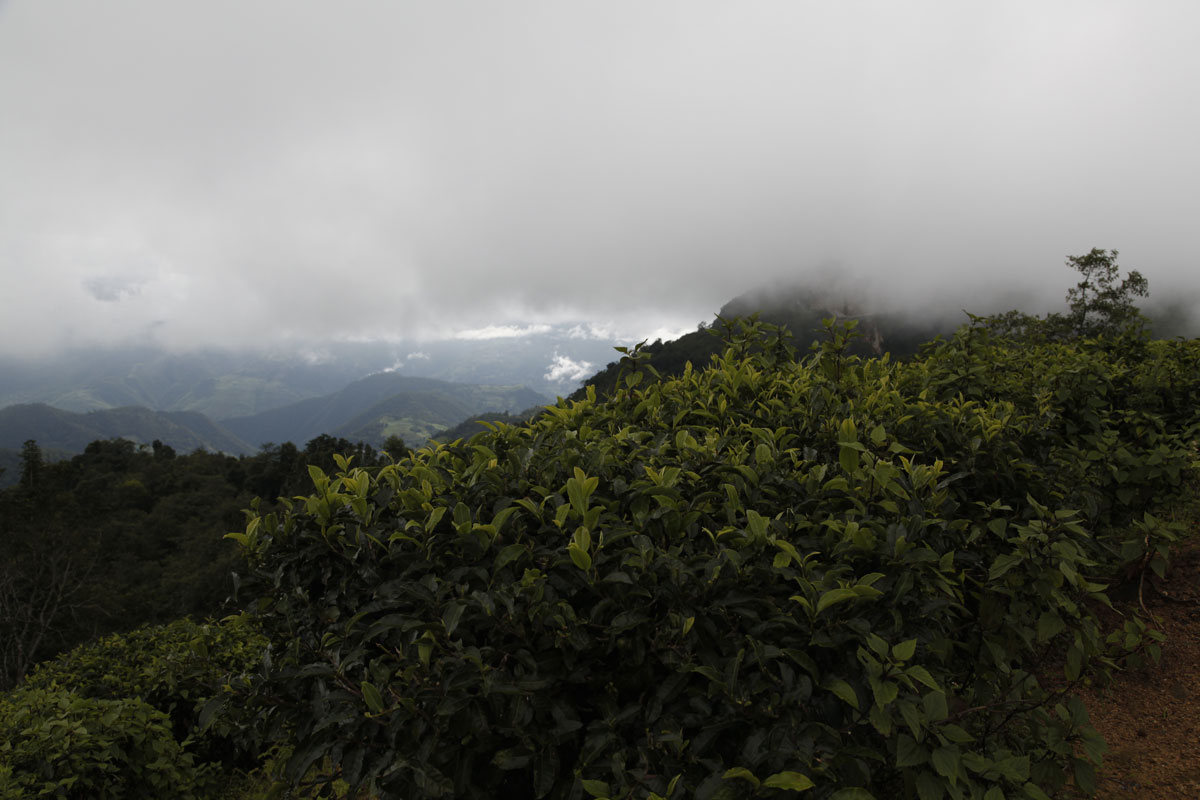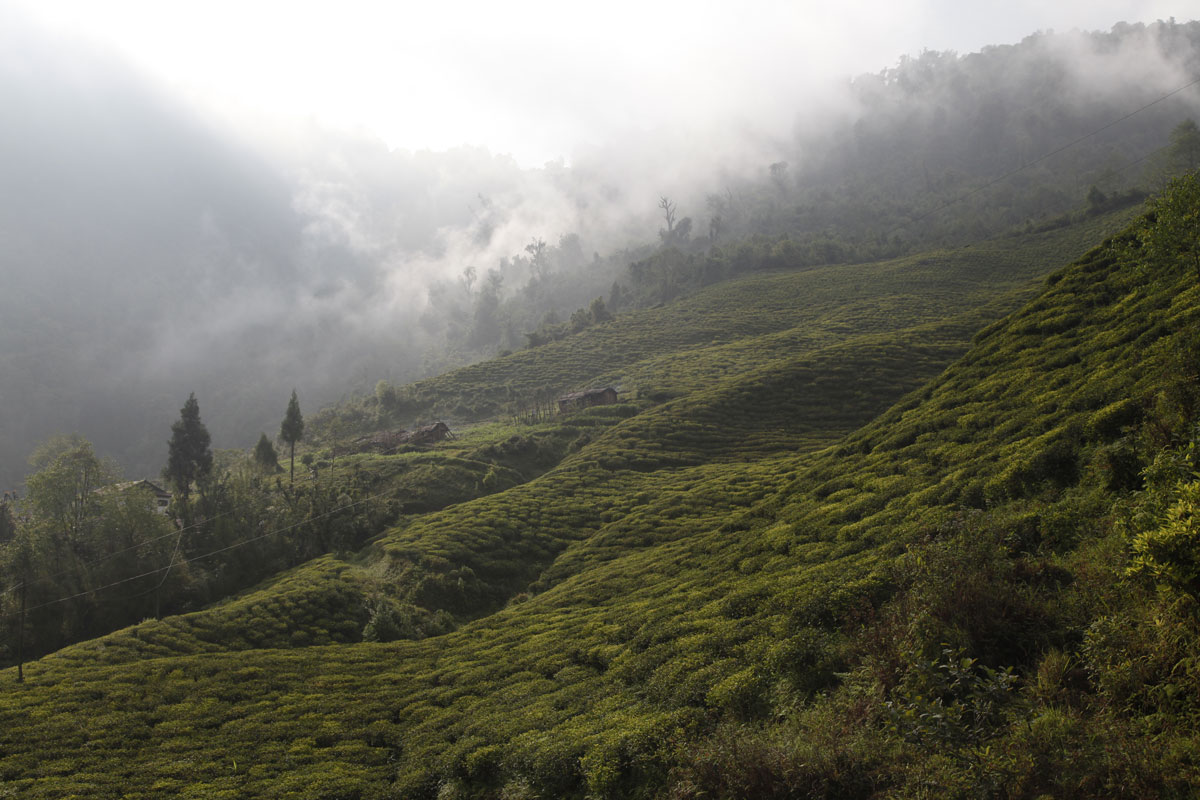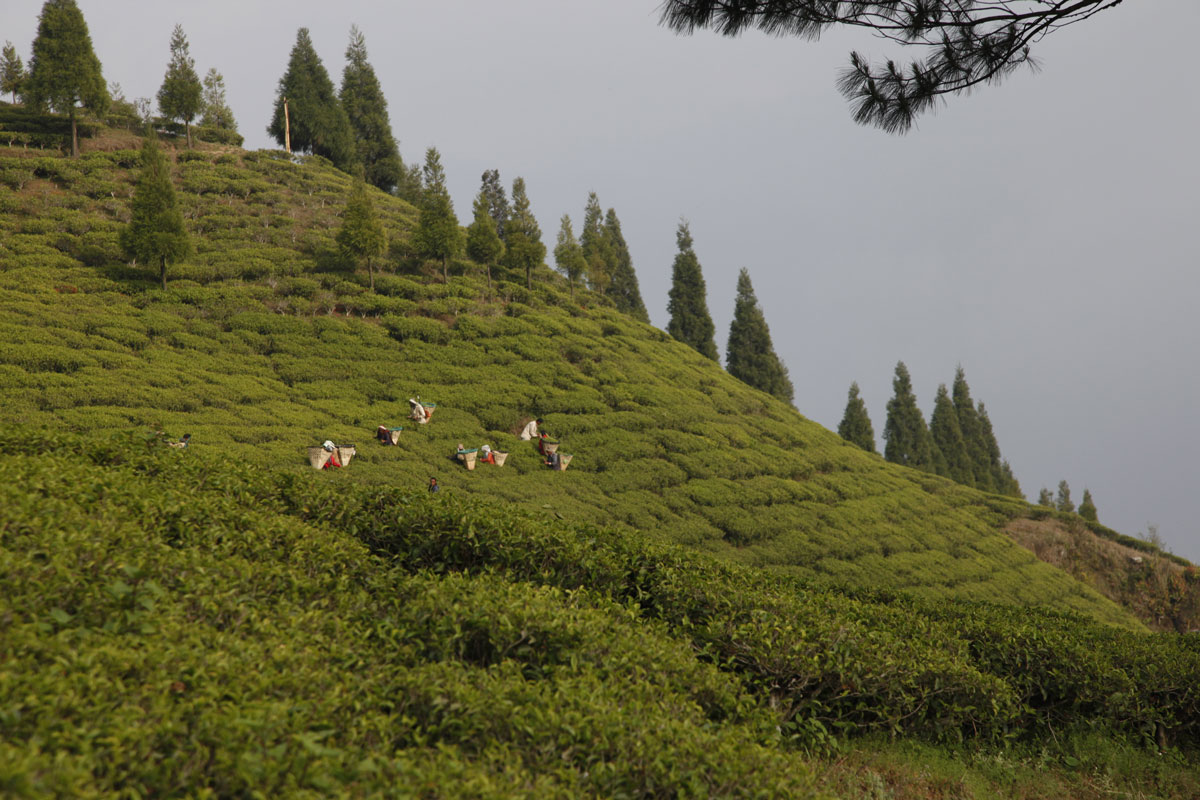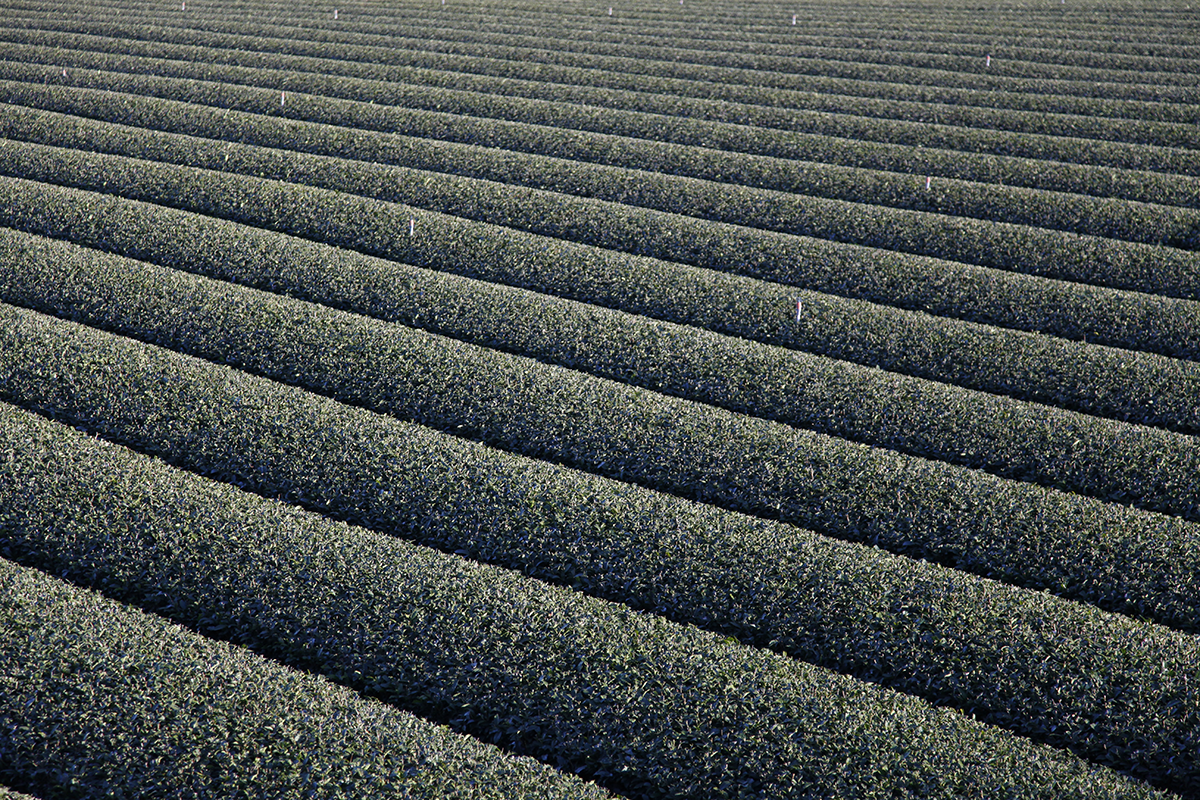On the island of Kyushu in Japan, it isn’t unusual to find a volcano in your field of vision. As someone who enjoys photography, this makes me very happy. The outline of these lava giants emphasises the controlled horizontality of the tea plants. They disrupt a rather too orderly landscape. They also remind us that the duration of harvests, the duration of seasons, the duration of human life, quite simply, is infinitesimal. Here is Mount Kaimon, which has a silhouette similar to that of Mont Fuji.
Plantation
Tea fields spiked with fans
Right down to the extreme south of Japan you can find these tea fields. They are recognisable for being spiked with fans, which are installed to prevent cold air from lingering around the tea plants. Here, I’m close to Kagoshima Bay, visible in the background, an important tea-producing region in the archipelago.
Mountains in Southern India
When you think of Southern India, you think of colourful temples, ancient spice trading posts, beaches lined with palm trees, boats gliding along complex networks of canals and backwaters, and luxuriant gardens. Southern India is less well-known for its mountains. Yet what are called the Ghats, literally “steps”, peak at more than 2,000 metres above sea level. This altitude and climate is well suited to tea plants.
Holding the soil in place
Farming methods change over time. Tea bushes sometimes used to be planted following the slope of the ground, resulting in vertical lines like those visible on the left of this photo. Today, young bushes are planted in horizontal rows, to reduce soil erosion. In heavy rain, the water runs off more slowly and the tea bushes hold the soil in place.
Growing tea: essential conditions
During a tour of the Institute of Himalayan Bioresource Technology, Dr Rakesh Kumar reminded those I’d brought with me on the trip of the essential conditions required to grow tea: acidic soil (pH 4.5 to 5.5), temperatures between 15°C and 32°C, and abundant rainfall (around 1,500 mm per year). Of course, altitude, sunlight and gradient also influence the way the plants behave.
I’ve chosen this photo to illustrate gradient. It is without doubt in the Himalayan foothills that I encounter the steepest mountainsides. With copious rainfall and well-drained soil, it’s a tea plant’s dream location!
Fine teas in the foothills of the Dhauladhar Mountains
The current tension in Darjeeling, although it seems finally to be easing, has guided my path toward new vistas this month. In the foothills of the Dhauladhar Mountains, a stone’s throw from Kashmir, a few tea plantations are well worth the detour—not only for their majestic view of the Himalayas, but also for the hard work of several local producers, which is unquestionably paying off. For decades, the region produced a relatively ordinary green tea for local consumption, but more recently, if you look hard enough, you can find a wide variety of more artisanal teas to delight the palate. All while gazing at the Dhauladhars, naturally.
Head in the clouds
The mountains covered with tea plants rise so high and the clouds sometimes fall so low that there is no room left for the sky. The clouds cover the green blanket of tea plants with mist, envelop them in a layer of cotton wool, caress them, and then disappear. I could stay for hours, in each tea field I walk through, contemplating the beauty of the landscape. And the more I climb, the greater the reward. Tea doesn’t grow above 2,000 to 2,200 metres, but at those altitudes the views are breathtaking. If the mist lets you see them.
Good Nepalese teas annoy Darjeeling producers
Indian tea producers are complaining about unfair competition from Nepal, and I don’t buy their argument. They don’t complain that Japan, China and other countries produce tea, they have to deal with it. But with Nepal, India is behaving as if it could put pressure on this country, which has no access to the sea, to impose conditions, make it pay taxes, and in this way prevent it from exporting its tea. Nepal is a particularly poor country which buys most of its consumer goods from India, and is therefore dependant on India to a certain extent. India is using this to its advantage. Among the complaints levelled by Indian producers, particularly those in Darjeeling, is that Nepalese teas create unfair competition for Darjeelings. But to my mind, Nepalese teas have their own character, they are recognisable, they don’t need the prestige of Darjeeling to enjoy success. They offer excellent value for money, much better than Darjeelings, and it is most likely this which is irritating India most. Lastly, and this is a positive thing, Nepal is starting to build a good reputation for itself in tea. This is a great improvement on the dodgy dealings that have been going on for years with certain unscrupulous Darjeeling gardens, who bring in fresh tea leaves from Nepal at low prices, process them in India, and then pass them off as pure Darjeelings!
A great name does not always make great tea
In Darjeeling and Nepal, you cannot trust the name of a garden blindly. Of course, plantations such as Turzum, Singbulli, Puttabong, Thurbo, Margaret’s Hope and Castleton have a much higher reputation than others. The same goes for Guranse and Shangri La in Nepal. But it is essential to understand that even the most prestigious gardens cannot produce high-quality teas all the time. At some point in the year they end up selling pretty nondescript ones. During the rainy season, for example, even an experienced planter cannot produce good tea, because the leaves grow too quickly and have no time to develop their essential oils. Also, each plantation has plots that are more or less well oriented, and planted with different cultivars. On Monday you might produce a sublime tea using leaves harvested from an excellent plot, and on Tuesday produce a very ordinary tea from a different part of the plantation. To sum up: yes, some gardens can make remarkable teas, but watch out, as they also produce mediocre ones. So you have to be very selective, and taste a vast amount of tea, to be able to recognise the best.
Combining leaves limits flavour variety
I have a regret when it comes to Japanese teas. My Japanese friends know it and share it. It is this: in Japan, few farmers produce finished tea. They are not usually set up to do this in terms of equipment. Most farmers focus on growing the best possible tea and harvesting it at the optimal time, but then they immediately sell the fresh leaves to co-operatives, who finish the production process. However, these co-operatives don’t keep the batches separate so they can process them individually. They put all the tea harvested by different farmers together. This results in a certain uniformity of flavour, whereas if each farmer took care of the production process right to the end, we would undoubtedly get a wider variety of flavours and aromas.

